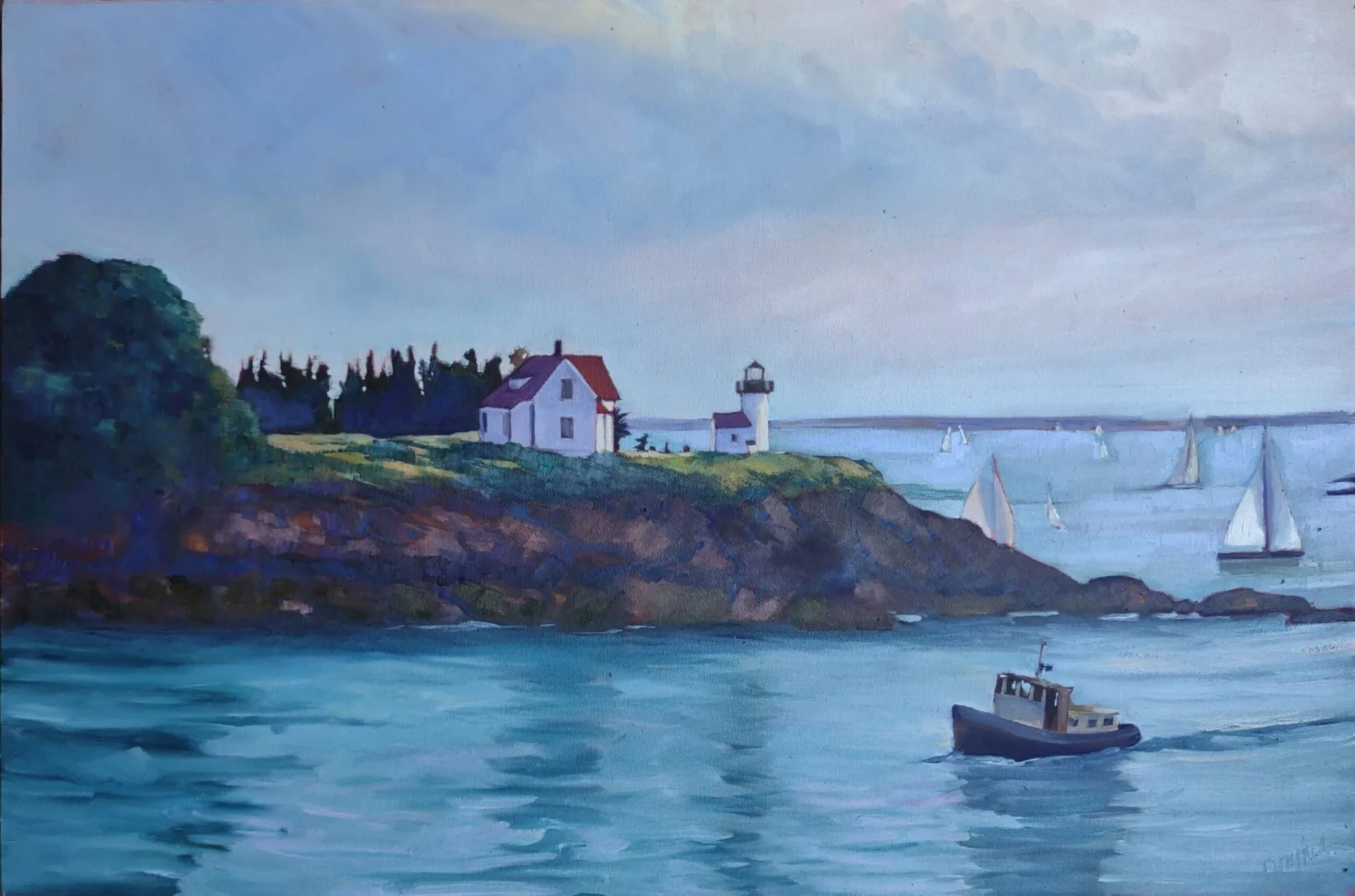We all have dreams we’re deferring until the timing is right. We believe, in our innocent way, that we have all the time in the world to do them. But we don’t.
 |
| Belfast harbor, oil on canvasboard, by Carol L. Douglas |
I had intended to write about fast, efficient color mixing, but you can read about that here, or here. This has been a weekend of wild upheaval for me. Its takeaway message has been that life is ephemeral and precious. If you’ve always wanted to do something, I suggest you start now, because none of us are promised tomorrow.
Cat is a young lady I’ve known of since she was an undergraduate art student at a small college in Alabama. Her pastor was my friend John Nicholson, and he thought we’d like each other. We became Facebook and—later—real-world friends. I knew that she and her husband were not childless by choice. I prayed for her when she underwent treatment for the disease that caused her infertility.
 |
| Spring on Beech Hill, oil on canvasboard, by Carol L. Douglas |
As long year stretched into long year, I accepted that their calling was not to be parents. After all, they’re smart, caring people who will serve humanity no matter how that’s shaped. But I couldn’t help musing about all the babies who are born into neglectful homes when other people want children but remain childless.
On Saturday Cat posted that she’s pregnant. The baby’s due in January. “We serve a God of miracles- I cannot begin to tell you how He is so faithful. If you are still waiting on His timing, please don’t give up. Your miracle is coming,” she wrote. I was humbled by the faithfulness of God, who answered their prayers when I’d given up on them.
 |
| Three Chimneys, oil on canvasboard, by Carol L. Douglas |
Last February, our old friend Kathy died of COVID in Buffalo. I’ve known Kathy and her husband Jim for decades. We watched their daughter Amy grow up and have a daughter of her own. If you haven’t been touched personally by COVID, let me tell you: it is an ugly beast. Kathy had it, Jim had it, Amy had it, and their granddaughter had it; everyone recovered except Kathy. She wasn’t old or morbidly obese, so why she died and they did not is another of those impossible questions.
I’ve kept in contact with Amy on Facebook since I moved from Buffalo. Last week she posted that her daughter Erika had finished the 9thgrade with honors. And then suddenly, without warning, Amy died. That was Sunday morning. She was just in her early 40s. I can’t even begin to process the cataclysm that has engulfed my old friend Jim and his granddaughter Erika.
 |
| Owl’s Head Fishing Dock, oil on canvasboard, by Carol L. Douglas |
My faith teaches that Satan (Death) has temporary dominion over this world. That still doesn’t answer the question of why Cat has had a miracle and Amy had a disaster; that’s an answer buried deep in their own relationships with God. But I do know that life is fleeting and ephemeral, and its ours to savor or squander.
When our kids were small, our friend Jan would invite us to stay in her cottage at Ogunquit. Jan had never married and was childless, but she loved children. Those vacations sparked my love affair with Maine.
Life goes on and we drifted apart. I’d think of her as I drove up Route 95, but never picked up the phone to call her. Last year, I found myself in Ogunquit and decided to give her a ring. I was a few weeks too late; she’d just died.
We all have dreams we’re deferring until the timing is right. They may be as simple as making a phone call, or they may involve travel, writing, or even learning to paint. We believe, in our innocent way, that we have all the time in the world to start them. But we don’t. The clock is ticking.


































